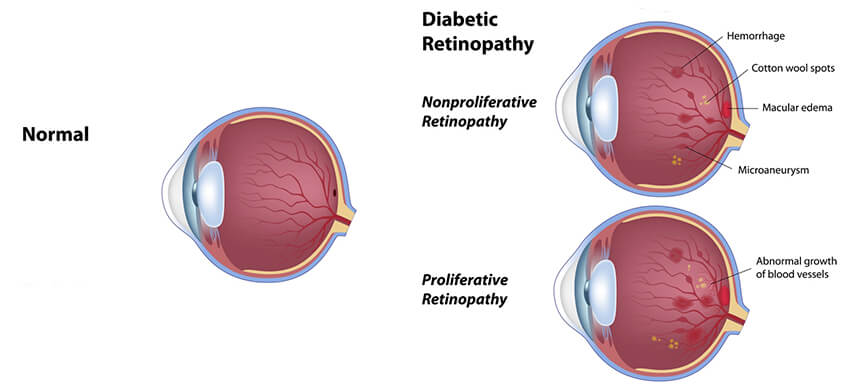Poorly regulated and high levels of sugar in the blood due to diabetes can cause changes in the optics of the eye, resulting in blurred vision and trouble focusing. Diabetes can also cause cataracts, a clouding of the lens inside the eye that blurs vision. The disease can cause double vision by affecting the nerves that control the alignment and movement of the eyes, and can cause the optic nerve to be more easily damaged by glaucoma.
But the most important cause of visual impairment in people with diabetes is diabetic retinopathy, a condition in which changes occur in the tiny blood vessels that nourish the retina. In the early stages of diabetic retinopathy, small blood vessels weaken and leak fluid or tiny amounts of blood, which distort the retina slightly. The key is whether the disease progresses past this stage – although 25 percent of people with diabetes have some degree of retinopathy, the condition does not progress to more severe problems in most.

The chances of having some form of diabetic retinopathy increase the longer a person has had diabetes. Retinopathy is present in 90 percent of those who have had the disease for more than 20 years. Research has shown that severe visual loss from diabetic retinopathy can be prevented or delayed by laser treatment, but only if the retinopathy is diagnosed early enough. Annual eye exams are a must for diabetics.
A diabetic can significantly reduce the risk of developing diabetic retinopathy by using common sense and taking good care of him or herself:
- Keep blood sugar under good control.
- Monitor blood pressure and keep it under good control, or seek appropriate care.
- Maintain a healthy diet.
- Exercise regularly.
- See an eye doctor for a dilated eye exam at least once a year.
If vision becomes blurred, it becomes difficult to do close work such as reading, or if vision becomes spotty or hazy, a diabetic should see his or her eye doctor right away.
